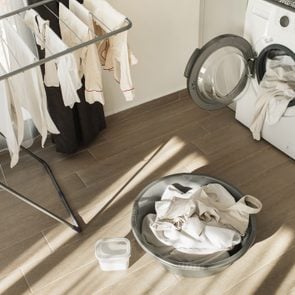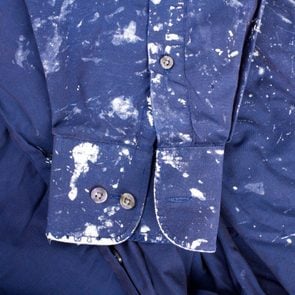How to Do Laundry the Right Way: A Step-by-Step Guide
Updated: Apr. 18, 2024

Here's everything you need to know about how to do laundry—from sorting to removing stains to drying—so your clothes stay in tip-top shape
Love it or hate it, laundry is a chore we all have to do. I learned how to do laundry at a young age and honestly somewhat enjoyed it. Then I moved to New York City and had to schlep my dirty clothes down multiple flights of stairs and across numerous city blocks to get them to the laundromat before making the trek back with a clean load. I began to let the laundry pile high and take less time to sort and care for my garments, filling the commercial-sized drums as much as I could to maximize “efficiency.” But that careless treatment did my wardrobe no favors.
Over my 15 years as a cleaning editor, I’ve researched and tested a variety of tips and tricks to make the task less cumbersome and started implementing them in my own routine. These days, I’m no longer a city gal, but I am a mother of two young boys who leave an impressive pile of dirty laundry in their wake, and it’s all too easy to veer back toward those bad habits.
When laundry day comes around again (as it inevitably will), make sure you’re ready to handle anything your laundry pile throws at you. Whether you need to hand-wash clothes, want solutions for how to remove stains or are looking for a refresh on the basics, we’ve got you covered. The key to doing laundry the right way? Knowing the general rules but also taking each load’s specific needs into account. “What you do [while wearing your clothes], the fabric type and even the weather can play a deciding factor in how often an item needs to be washed,” says Nathan Sell, Senior Director of Sustainability at the American Cleaning Institute.
(While you’re at it, also learn how to properly wash baseball hats.)
Ahead, you’ll find easy-to-implement, step-by-step laundry tips from Sell and fourth-generation dry cleaner Zachary Pozniak that will totally transform the way you wash your clothes.
Get Reader’s Digest’s Read Up newsletter for more cleaning, tech, travel, humor and fun facts all week long.
About the experts
|
1. Read your garments’ care labels
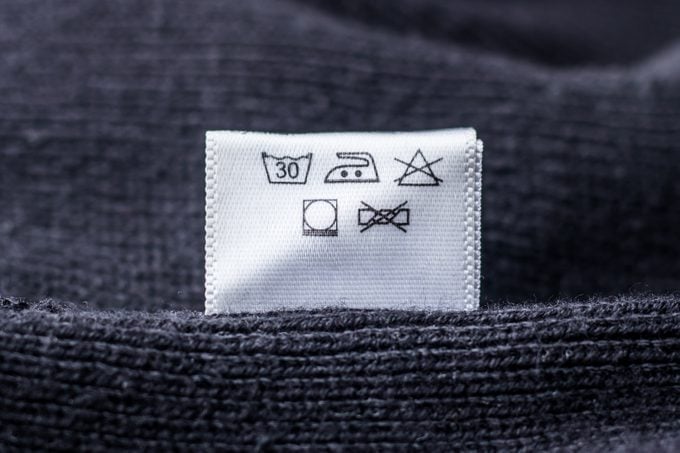
While a giant pile of laundry can seem daunting and make you want to shove it into your machine all at once and cross your fingers that everything comes out OK, it’s important to remember that different fabrics require different care. Make sure to check each item’s care label, typically found at the neck, waist or side seam. The laundry symbols found here will tell you the best method to wash, dry and iron your clothes.
If an item is missing a care label, there are some general best practices to follow, depending on the type of fabric you’re dealing with, according to Pozniak.
- Plant-based fibers: Fabrics like cotton, bamboo and jute fall into this category, and they can be washed in a machine or by hand. Just make sure to keep water temperatures low to reduce shrinking, fading and wrinkling. Save hot water and high dryer heat for white cotton towels, sheets and underwear.
- Synthetic fibers: Polyester, nylon, spandex, microfiber and other synthetics are typically hydrophobic, meaning they absorb water less or even repel it. The perk is that they usually don’t hold onto most water-based stains, explains Pozniak. “However, [they] do cling onto oils, which can promote malodor,” he adds. Air-dry these fabrics when you can, as “overdrying will cause them to break down prematurely.”
- Animal fibers: Some items made of cashmere, wool or silk can be washed at home, while others cannot. “This is more dependent on the weave and garment type rather than the specific fiber,” says Pozniak. “Most knit tops and sweaters can be cared for at home, but wool suits and camel overcoats should be given to a professional.” When washing at home, these garments typically require hand-washing with a specially formulated detergent that leaves behind protective conditioners on the fabric’s fibers, as well as air-drying.
2. Sort your laundry
Once you determine which items are machine washable, sort them into piles of like with like. Start by separating laundry by color: whites and lights, colored fabrics, and dark garments. Within each of those piles, separate items by fabric type or care instructions. Items that require a cold-water wash and delicate dry, for example, should not be washed with fluffy towels, which will need a hotter and longer drying time. Also, pull out items that might require extra care, like heavily soiled workout clothes. Those should be treated separately.
| ♦ Pro tip |
| If a particular pile is too small to run a full load, you can combine different fabric types of the same color for efficiency. Just be sure to follow the care instructions for the most delicate fabric type in the mix. |
3. Address stains
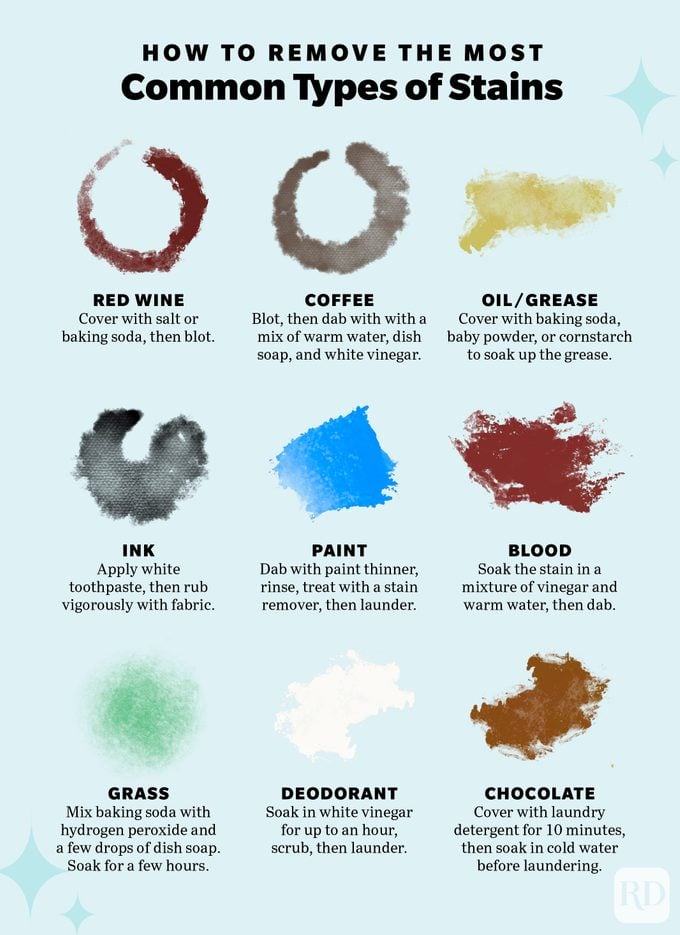
Pre-treat stains as soon as you notice them to allow the stain remover time to work before the item is washed—anywhere from 5 minutes to a few hours, depending on the severity and stubbornness of the stain. How you treat the discoloration depends on what type of stain it is, and we have a comprehensive stain-removal guide to help you with each of them.
In general, though, there are a few tidbits you should keep in mind:
- Remove as much of the excess as possible. Blotting liquid stains with a clean paper towel or scraping off food or lipstick with a blunt tool (like a spoon or an old credit card) usually does the trick. For oil stains, baking soda or cornstarch can work wonders.
- Use a surfactant. A surfactant is a fancy word for the combination of ingredients in dish soap or laundry detergent that will loosen, help break down stains and suspend them in wash water so they can be rinsed away.
- Choose the right water temperature for the stain. Choose the wrong one, and you could accidentally set the stain into the fabric. For example, oil stains should be rinsed in the hottest water allowable for the fabric, while protein-based stains, such as chocolate stains and other food stains, should be washed in cold water.
4. Choose your detergent
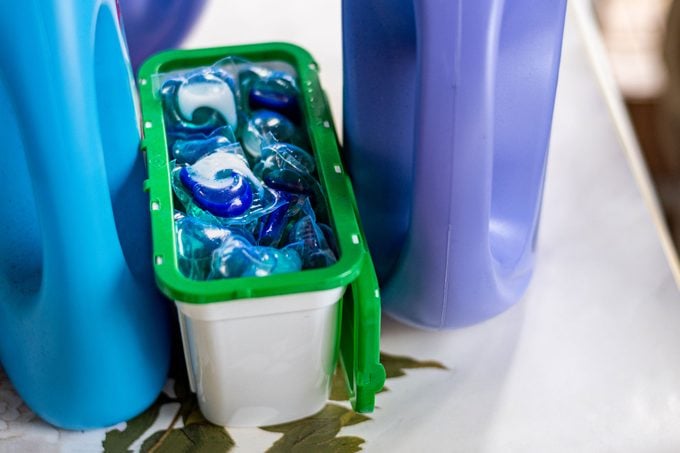
If you have a high-efficiency (HE) washing machine, make sure your detergent has the HE label on it. This detergent is specifically formulated for these machines and is vital to keeping them working properly. You can use HE detergent in a standard machine, but you cannot use standard detergent in a high-efficiency machine because it may bubble up and overflow.
Beyond this, your detergent choice is up to personal preference and budget. According to Sell, liquid detergents are particularly good on greasy, oily or food-based soils, and they can be used as a pre-treater for stains. Powder detergents, on the other hand, are “especially effective at lifting out ground-in dirt” and can be cheaper than other options. There are also concentrated ultra detergents, combination detergents with built-in bleach or fabric softener, and laundry pods to consider.
No matter which option you go with, always read the directions and use only the amount indicated for your load size. Using too much detergent could leave residue on your garments and too little might not clean your clothes completely, particularly if they are heavily soiled.
| ♦ Pro tip |
| Before putting clothes in your machine, add your selected detergent to the machine’s detergent dispenser (if liquid) or into the drum (for powders or pods). The latter will help ensure that the detergent dissolves fully. |
5. Select laundry additives
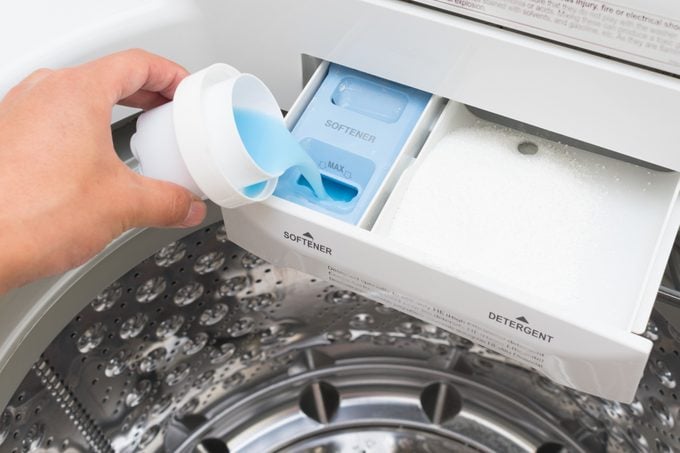
If you’re using anything other than detergent in your load, now’s the time to add it. Fabric softener should go in the machine’s designated fabric-softener dispenser or a specially made dispenser ball to ensure it gets released at the appropriate time (if added too soon, it will get washed away). Experts recommend using fabric softener only with natural textiles, like cotton or linen. Avoid it on water-repellent or fire-retardant fabrics, as it can alter their effectiveness since it essentially adds a coating to a garment’s fibers.
Some people choose to add laundry-detergent boosters—such as borax, super washing soda or fabric rinses—to their loads instead, particularly those filled with athletic wear or highly soiled items. These boosters can help eliminate stubborn odors better than detergent alone. A liquid laundry rinse, like distilled white vinegar or Tide Clean Boost, should be added to the fabric-softener dispenser (these are alternatives to fabric softener), while others, like borax or baking soda, should go directly into the machine’s drum.
6. Load your washing machine
“When it comes to loading a machine, I recommend shooting for 75% filled at the max,” says Pozniak. “If you have a front loader, you should be able to fit your hand vertically from the top of the drum to the top of your clothes. Too many clothes can cause water and cleaning products to not dispense evenly, which can lead to less clean clothes or detergent staining.” As tempting as it may be, never fill the machine to the brim. Your clothes will come out cleaner if you split one large load into two smaller loads because they will have space to move around and ensure they come into contact with the detergent.
7. Select the washer cycle
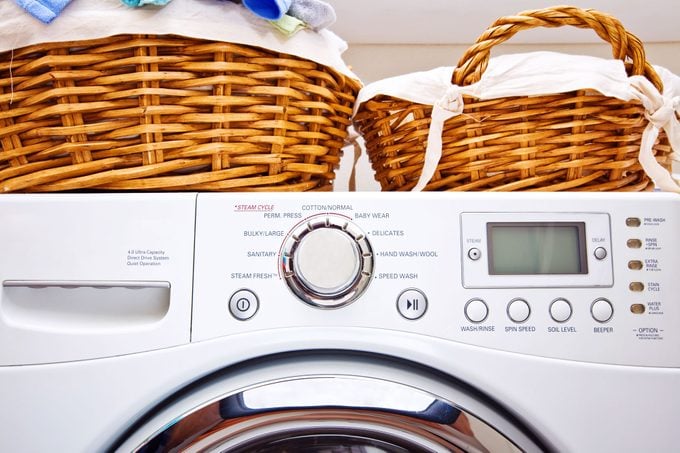
Next, it’s time to select the load size and cycle setting. Modern washing machines typically have lots of bells and whistles, so check your owner’s manual to learn about the buttons on your specific model. Most machines typically offer load-size options from small to super. Small should be selected if your drum is only about a quarter full, medium is right for a half-full unit, and super is meant for a machine at maximum capacity (75% full, as Pozniak recommends above).
The cycle setting refers to the speed at which the machine agitates or tumbles the clothes around and then another speed at which it spins the water out of the clothes. These are the most common:
- Permanent Press, or “fast/slow,” means that the cycle will produce a fast, highly agitating washing cycle, followed by a slow spin cycle to prevent wrinkling.
- Regular setting, or “fast/fast,” is meant for really dirty, sweaty or bulky loads.
- Delicate or Gentle is a “slow/slow” combination that will take it easy on underwear, bras and other delicate items to prevent damage.
8. Choose the right water temperature
These days, most commercially produced detergents are just as effective in cold water as they are in warm. Plus, washing with cold water can prevent colors from fading and fabrics from shrinking, so it’s often preferred by fabric-care experts. As an added bonus, cold water is the most sustainable choice, saving energy and money. Once again, “follow the fabric-care labels on your clothes,” says Sell. “Those symbols contain a lot of useful information.” And that includes the ideal water temperature.
| ♦ Pro tip |
| Cold water will be best at preserving colors, while warm water can be used for heavily soiled garments. Only use hot water when you need to make use of its sanitizing properties—like, say, if a family member has the stomach bug or your dog had an accident. |
9. Transfer items to the dryer or drying rack
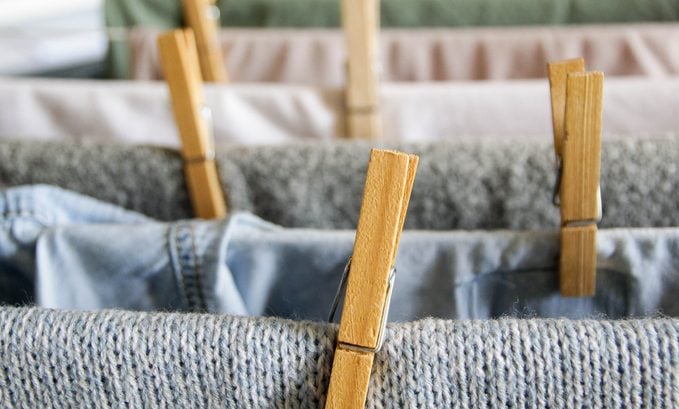
When moving items from the washer to the dryer, separate pieces that may have gotten tangled together in the wash and shake loose any items that balled up to ensure they dry evenly. Also take care to examine items you pre-treated for stains. If not fully removed during the wash, stains can set in permanently when dried with high heat. If you notice a stain that remains, treat it again and rewash the garment.
If your items are too delicate for the dryer—think: cashmere, wool and silk—lay them flat and air-dry. “Tumble-drying will cause mass shrinkage,” warns Pozniak, “and hanging dry will cause stretching. However, silk should be hung dry.”
10. Choose a dryer setting
Although they can vary by machine, the most common dryer settings are:
- Regular/Heavy: High heat and fast-drying
- Permanent Press: Medium heat with a cool-down to help release and reduce wrinkling
- Delicates: Lowest heat setting and least agitation
- Air Fluff: No heat; used for fluffing or refreshing
Once again, refer to the care labels to determine the recommended method to dry each garment.
You may opt to use dryer sheets, dryer balls or nothing at all—it’s personal preference. Dryer sheets can help soften clothes and prevent static by coating them with fabric softener, while dryer balls soften garments by fluffing the textiles as they bounce around. They can also help speed up the drying process and prolong the life of certain pieces.
11. Hang or fold items
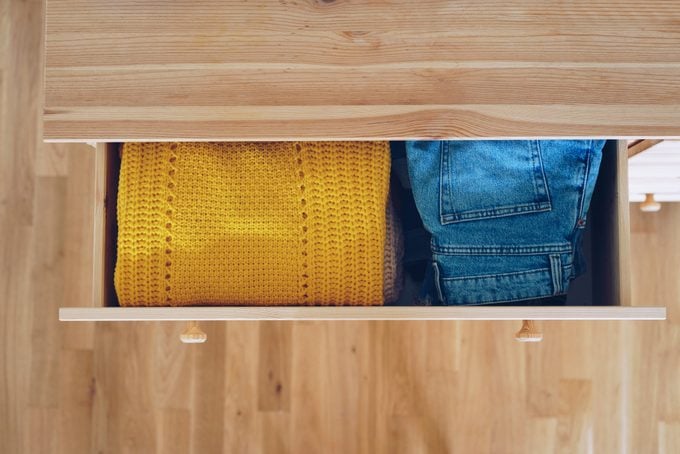
To prevent wrinkles, hang or fold your garments while they are still warm from the dryer. Hang flowy and delicate fabrics like silk and lace, dresses (unless they’re made of jersey or performance fabric), blouses, jackets, dress pants, jumpsuits, and linen or other fabrics that wrinkle easily. Pretty much everything else—sweaters and sweatshirts, tees, jeans, activewear—can be folded.
As your garments cool down, by about 15 minutes after the dryer finishes its cycle, wrinkles will start setting in. If you don’t get to them in time and your items start looking less than stellar, try one of these wrinkle-release methods—no iron necessary!
Additional laundry tips for the best possible results
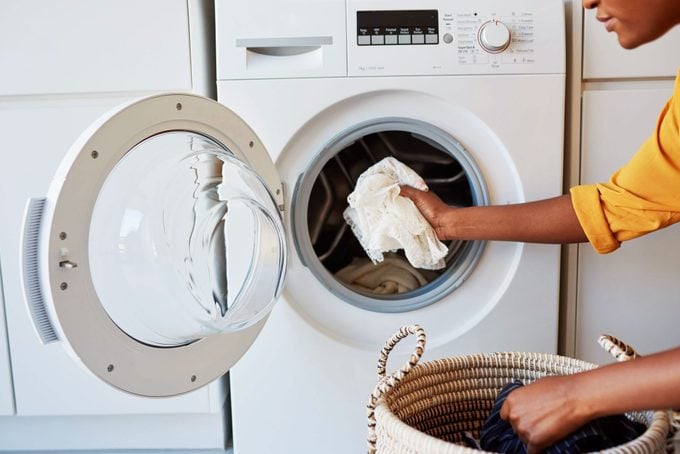
Even when you meticulously follow the laundry steps noted above, it’s easy to forget a few simple things that can lead to big problems. Make sure to memorize the checklist below to avoid some common laundry mistakes.
- Empty all pockets before washing.
- Zip up zippers and fasten buckles and clasps to prevent them from catching on and snagging other items in the load.
- Leave buttons unbuttoned (including those on collars and cuffs) to avoid loosening their threads with too much tugging during the wash.
- Check the care label to see if an item can be bleached. If so, opt for oxygen bleach, as chlorine bleach can alter the color of garments. Save chlorine bleach for cleaning toilets and sanitizing other household items.
- Maintain your machine to keep it performing its best. Whether you have a top loader or a front loader, leave the door open when it’s not in use to help the drum dry out and prevent mold growth. Every month or so, wipe out the detergent dispenser and wipe down the gaskets around the door. And about every six months, give the entire washing machine a deep clean.
- Check your dryer’s lint trap after each use. Aside from being a fire hazard, a clogged filter can lead to lint-covered clothing.
- If you’re not sure if an item should be run through the dryer, your safest bet is to air-dry the garment instead. That way, you won’t inadvertently shrink the item.
- Always keep laundry products in their original containers and out of reach of young children. “The trend to re-home laundry products into clear containers prioritizes style over safety and is quite dangerous,” says Sell.
- Don’t let the chore get you down. Make it fun by timing the task to a motivating cleaning playlist or challenging a family member to a fold-off.
Why trust us
At Reader’s Digest, we’re committed to producing high-quality content by writers with expertise and experience in their field, in consultation with relevant, qualified experts. For this piece on how to do laundry, Stephanie Sisco tapped her experience as a longtime home and cleaning editor, and then Mary Marlowe Leverette, a fabric-care, stain-removal and laundry expert with more than 40 years of industry experience, gave it a rigorous review to ensure that all information is accurate and offers the best possible advice to readers. We also relied on reputable primary sources, including cleaning and health experts and reputable organizations. We verified all facts and data and backed them with credible sourcing, and we will revisit them over time to ensure they remain accurate and up to date. Read more about our team, our contributors and our editorial policies.
Sources:
- Zachary Pozniak, professional dry cleaner and co-owner of Jeeves New York who shares his clothing-care advice on YouTube, TikTok and Instagram; email interview, April 4, 2024
- Nathan Sell, Senior Director of Sustainability at the American Cleaning Institute; email interview, April 2, 2024
- The American Cleaning Institute: “Laundry Basics”
- The American Cleaning Institute: “Laundry Care for Better Health”
- Cold Water Saves


